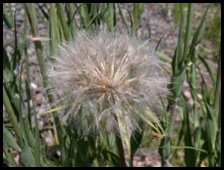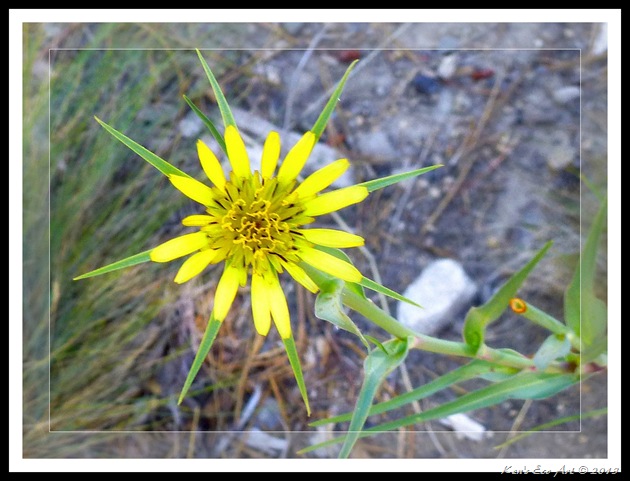 |
| (Fig. 02) |
Description: Western Salsify (Tragopogon dubius), a.k.a. Western Goat's Beard, Wild Oysterplant, Yellow Salsify, Yellow Goat's Beard, Meadow Goat's Beard, Goat's Beard, Goatsbeard, Common Salsify, or Salsify, is a species of Salsify has become widespread since its introduction into North America. Because some of these names are also, or more commonly, used for other species of Salisfy, they are better avoided. Like most salsifies, the Western Salsify grows as an annual or occasionally biennial forb, reaching a height of typically 8-24 inches, but sometimes to almost 40 inches. It grows typically in warm, sheltered spots with moist soil. Its yellow flower is 1.5 to 2.5 inches in diameter and is likely to be seen in late spring or early summer. The yellow, dandelion-like flower heads are born singly on 12 to 40 inch stems that are swollen and hollow below the flower head. Ten or more long, narrow involucral bracts extend beyond the flowers. There are 20 to 120 ligulate flowers per head. The flowers open early in the morning and often close up by late afternoon. Later the plant forms a seed head (Fig. 02) that resembles that of a dandelion, though distinctly larger and tan in color. The bracts (leaves) of the Western Salsify which show behind the flower, a distinctive feature of salsifies, are much longer and more noticeable than they are in some of the other species of this plant. This plant can be found in range lands and pastures and is commonly seen in roadside ditches and on the edges of fields. Various parts of western salsify are consumed by wildlife. Pocket gophers feed on the roots, while other mammals such as deer, squirrels, or rabbits may bite off one or more flowering stalks. |


